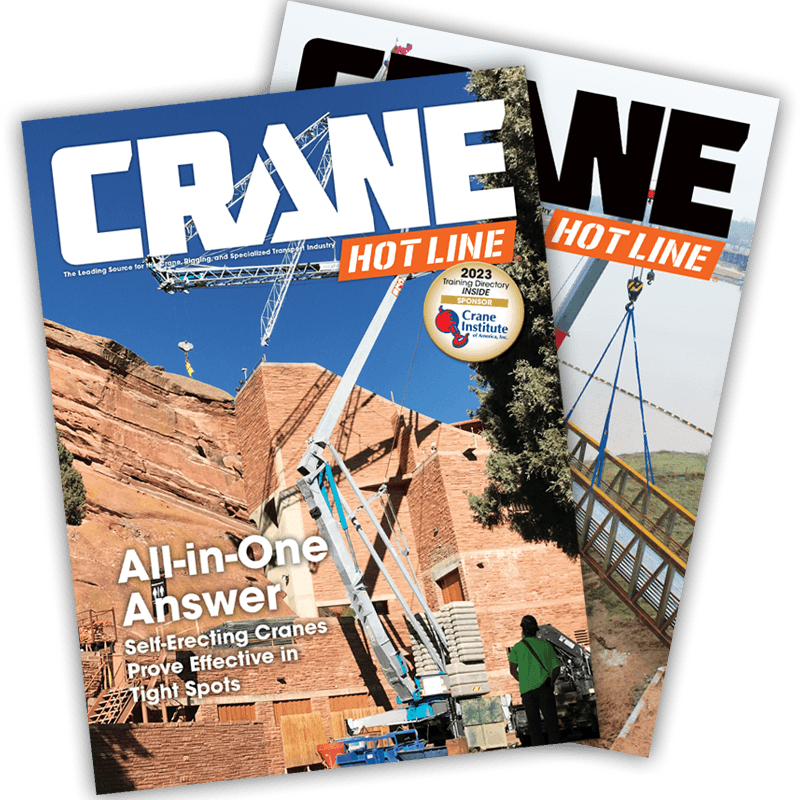Manufacturing in Miniature
March 7, 2007 • Grant Peterson knows how to make a crane that can lift several tons. He has the measurements, the designs and the necessary knowledge.

A brass crane model from CCM
Enlarge Image
But at his office in Beaverton, Ore., Peterson has more intricate matters in mind. Most of the cranes he and his staff develop weigh less than five pounds.
In the lift industry, niche markets are constantly being developed. Here's yet another offshoot of that trend: the model crane industry.
Leading manufacturers of the model cranes include Peterson's Classic Construction Models (CCM) and Towsley's, which recently made a Manitowoc 18000 model that was more than six-feet-tall when completed. That was the exception, though. Most model cranes are less than four-feet-tall.
Because the models are so much smaller than the real cranes, it seems they'd take less time to manufacture. That's not the case, says Peterson.

A close-up view
Enlarge Image
“From when we get the manufacturer's drawings, it's usually about a year before the models are in-house and ready to sell.”
What happens in that process? How is a model crane made? It's not quite as simple many might think.
It starts with an idea. Peterson says he gets suggestions everyday from collectors and contractors alike. CCM chooses cranes for models based on their popularity and size, additionally trying to provide variety in the types of models CCM produces. Lattice-boom models have been especially popular, Peterson says.
After a crane is chosen, the model manufacturer goes to the crane manufacturer to get a copy of the real design. Some model companies only send photos and general dimensions to a model-maker to be interpreted and shrunk down. But because CCM primarily manufactures more-complicated brass models, it completes all designs in-house.
“We have all the information to build the real machines when we build our models,” Peterson says.

A model's cab
Enlarge Image
The designs are scaled-down to adapt to the model's size. Some parts, such as a 1/2-inch screw used in the original crane, cannot be scaled down. So the process becomes a mathematical and artistic puzzle of reducing the size of the crane without altering its appearance.
“We try to get as much detail as we can but also still be accurate to the original design,” Peterson said.
After the design is finished, at CCM it's sent to a rapid-prototyping machine, which Peterson compared to a 3-D printer. The machine creates a resin prototype of the model that is sent to CCM's manufacturer in South Korea to be used as a pattern to produce the production models..
Brass models take longer to make than the more-common die-cast models. Die-cast models can basically be poured into a mold to create. With brass, all 800 - 1,200 parts are hand-soldered together. At CCM's manufacturer in South Korea, 20 people work eight hours a day, five days a week hand-soldering and meticulously assembling minute parts for the models.

Mid-length model
Enlarge Image
With all that detailed craftsmanship, it's easy to see why models can take a year to be finished. The craftsmanship also makes the brass models significantly more expensive. They run anywhere from $1,500 - $2,000; and die-cast models are usually about $200 - $400.


